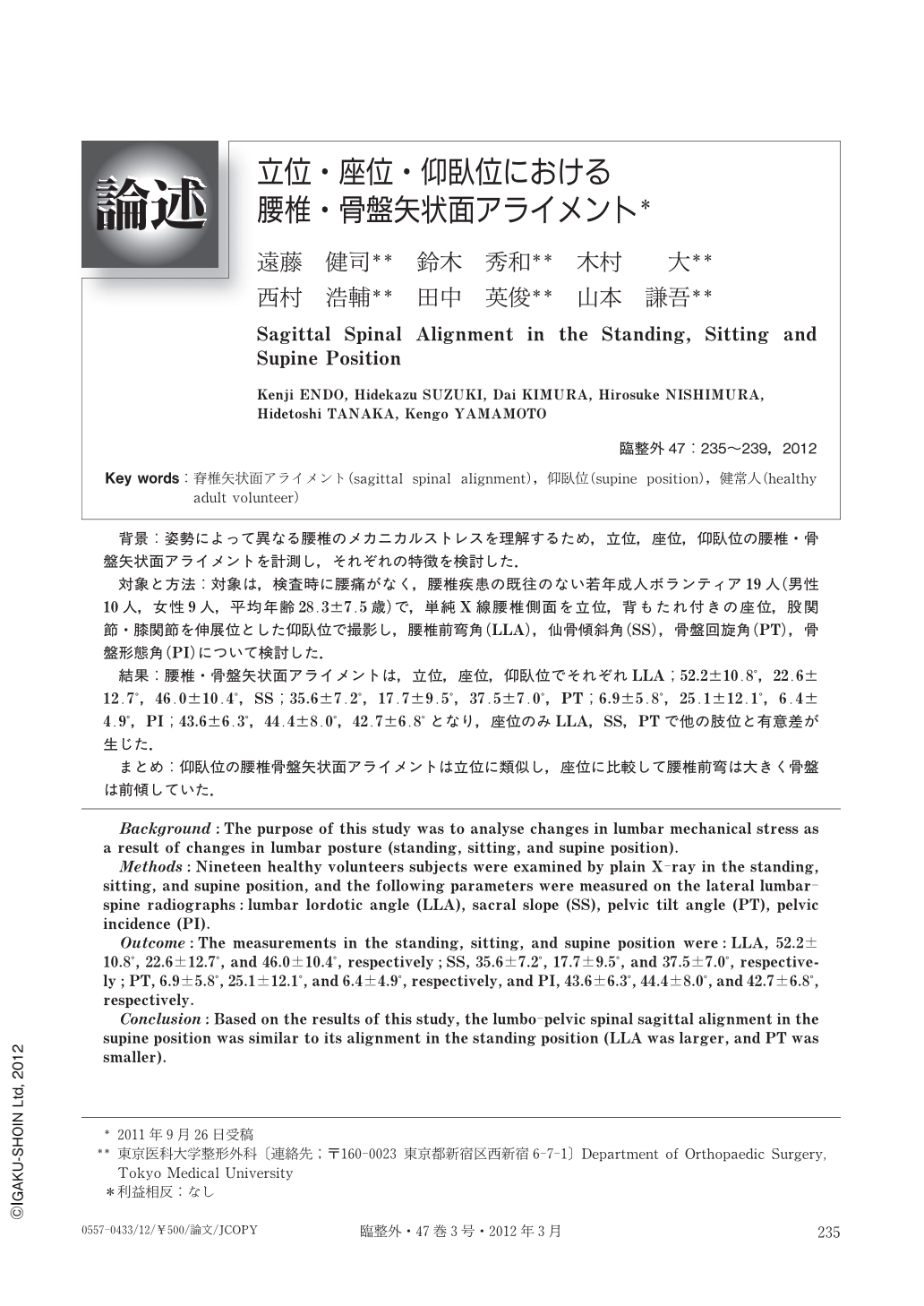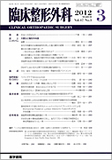Japanese
English
- 有料閲覧
- Abstract 文献概要
- 1ページ目 Look Inside
- 参考文献 Reference
背景:姿勢によって異なる腰椎のメカニカルストレスを理解するため,立位,座位,仰臥位の腰椎・骨盤矢状面アライメントを計測し,それぞれの特徴を検討した.
対象と方法:対象は,検査時に腰痛がなく,腰椎疾患の既往のない若年成人ボランティア19人(男性10人,女性9人,平均年齢28.3±7.5歳)で,単純X線腰椎側面を立位,背もたれ付きの座位,股関節・膝関節を伸展位とした仰臥位で撮影し,腰椎前弯角(LLA),仙骨傾斜角(SS),骨盤回旋角(PT),骨盤形態角(PI)について検討した.
結果:腰椎・骨盤矢状面アライメントは,立位,座位,仰臥位でそれぞれLLA;52.2±10.8°,22.6±12.7°,46.0±10.4°,SS;35.6±7.2°,17.7±9.5°,37.5±7.0°,PT;6.9±5.8°,25.1±12.1°,6.4±4.9°,PI;43.6±6.3°,44.4±8.0°,42.7±6.8°となり,座位のみLLA,SS,PTで他の肢位と有意差が生じた.
まとめ:仰臥位の腰椎骨盤矢状面アライメントは立位に類似し,座位に比較して腰椎前弯は大きく骨盤は前傾していた.
Background:The purpose of this study was to analyse changes in lumbar mechanical stress as a result of changes in lumbar posture (standing, sitting, and supine position).
Methods:Nineteen healthy volunteers subjects were examined by plain X-ray in the standing, sitting, and supine position, and the following parameters were measured on the lateral lumbar-spine radiographs:lumbar lordotic angle (LLA), sacral slope (SS), pelvic tilt angle (PT), pelvic incidence (PI).
Outcome:The measurements in the standing, sitting, and supine position were:LLA, 52.2±10.8°, 22.6±12.7°, and 46.0±10.4°, respectively;SS, 35.6±7.2°, 17.7±9.5°, and 37.5±7.0°, respectively;PT, 6.9±5.8°, 25.1±12.1°, and 6.4±4.9°, respectively, and PI, 43.6±6.3°, 44.4±8.0°, and 42.7±6.8°, respectively.
Conclusion:Based on the results of this study, the lumbo-pelvic spinal sagittal alignment in the supine position was similar to its alignment in the standing position (LLA was larger, and PT was smaller).

Copyright © 2012, Igaku-Shoin Ltd. All rights reserved.


